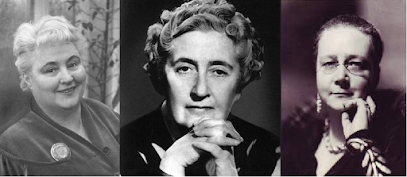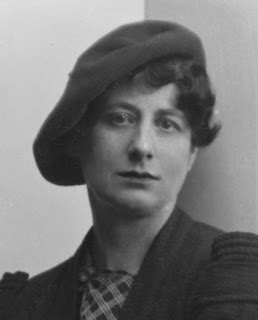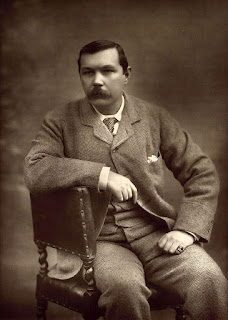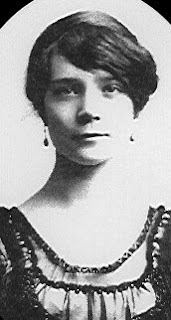Talented New Zealander contributed to art, the theatre and crime writing
 |
| Ngaio Marsh pictured in 1935, early in her writing career |
Her 32nd and final crime novel, Light Thickens, was completed only a few weeks before her death. The story revolves around one of her greatest theatrical passions, Shakespeare’s play, Macbeth.
Ngaio began writing detective novels in 1931 after moving to London to start up an interior decorating business. She has written that the idea for her first crime novel, A Man Lay Dead, came to her when she was living in a basement flat off Sloane Square.
In the preface to my copy of an omnibus edition of her first three novels - A Man Lay Dead, Enter a Murderer and The Nursing Home Murder - Ngaio Marsh describes how she came up with the character of Detective Inspector Roderick Alleyn.
It was a wet Saturday afternoon and she had been reading a detective story borrowed from a library, although she says she couldn’t remember whether it was a Christie or a Sayers. By four o’clock, as the afternoon became darker and the rain was still coming down relentlessly, she had finished it. She wondered whether she could write something similar and braved the rain to go to a stationer’s shop across the street where she bought six exercise books, a pencil and a pencil sharpener.
She sat down to write what was to be the first of a series of 32 crime novels featuring the gentleman detective Roderick Alleyn.
Along with Margery Allingham, Agatha Christie and Dorothy L Sayers she was to dominate the genre of crime fiction for the next 50 years with her novels and numerous short stories.
 |
| With Marsh, Margery Allingham (left), Agatha Christie and Dorothy L Sayers were the Queens of Crime |
After leaving school she had studied painting before joining a touring theatre company. She became a member of an art association in New Zealand and continued to exhibit her paintings with them from the 1920s onwards.
Her hero detective Alleyn was named after an Elizabethan actor, Edward Alleyn, and Ngaio allows him to meet and fall in love with an artist, Agatha Troy, in her 1938 novel, Artists in Crime.
She directed many productions of Shakespeare’s plays in New Zealand and Australia and the 430-seat Ngaio Marsh Theatre at the University of Canterbury is named in her honour.
 |
| Patrick Malahide (centre) starred in a BBC adaptation of Marsh's Alleyn novels |
Ngaio’s autobiography, Black Beech and Honeydew was published in 1965. She was inducted into the Detection Club in 1974 and received the Grand Master Award for lifetime achievement as a detective novelist from the Mystery Writers of America in 1978.
Ngaio died in her home town of Christchurch and was buried at the Church of the Holy Innocents, Mount Peel.
The Ngaio Marsh Award is given annually to the writer of the best New Zealand mystery, crime or thriller novel. Her home in Christchurch is now a museum and displays her collection of antiques. On her desk lies a fountain pen filled with green ink, which was her long time writing tool.
Ngaio Marsh’s 32 crime novels are available in a variety of formats. You can find many of them at: or














